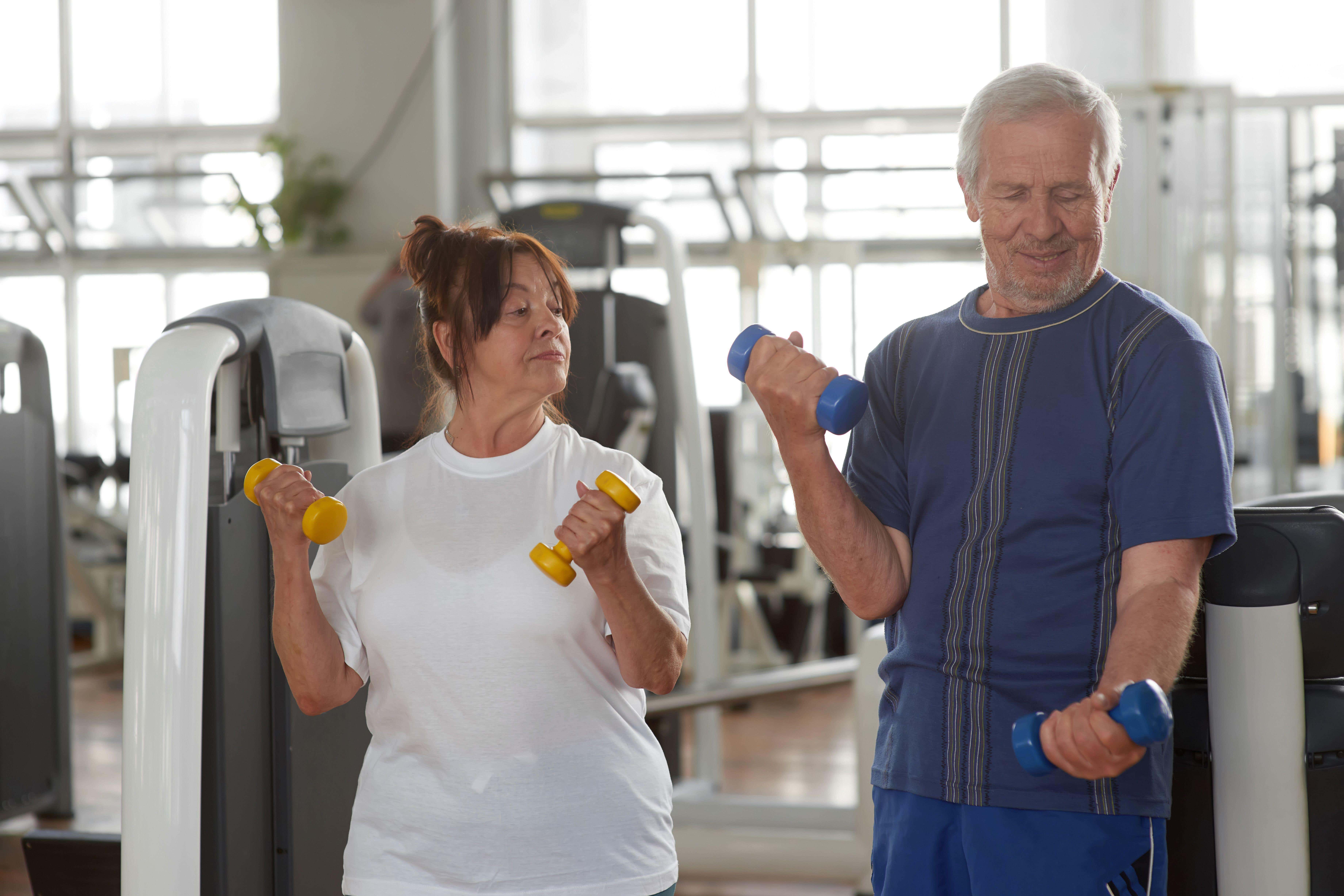How weight training in retirement can keep your bones and muscles strong
Start small, seek professional guidance and be consistent, say the experts.

Your support helps us to tell the story
From reproductive rights to climate change to Big Tech, The Independent is on the ground when the story is developing. Whether it's investigating the financials of Elon Musk's pro-Trump PAC or producing our latest documentary, 'The A Word', which shines a light on the American women fighting for reproductive rights, we know how important it is to parse out the facts from the messaging.
At such a critical moment in US history, we need reporters on the ground. Your donation allows us to keep sending journalists to speak to both sides of the story.
The Independent is trusted by Americans across the entire political spectrum. And unlike many other quality news outlets, we choose not to lock Americans out of our reporting and analysis with paywalls. We believe quality journalism should be available to everyone, paid for by those who can afford it.
Your support makes all the difference.Weight training is often associated with intimidating gyms and bulky bodybuilders, however new research suggests that it could benefit everyone as it may preserve leg strength into older age.
A study of 451 retirement age people found that a third of the group, who underwent four years of heavy resistance training, maintained their leg strength over time – while those who did moderate or no extra exercise had lost strength.
The authors, including from the University of Copenhagen, writing in the journal BMJ Open Sport and Exercise Medicine, concluded: “In well-functioning older adults at retirement age, one year of heavy resistance training may induce long-lasting beneficial effects by preserving muscle function.”
Debunking the myths
Eddie Baruta, global head of gym floor personal training at Ultimate Performance, is keen to dispel the myth that gym floors are reserved for the ultra fit young people of the world.
The personal trainer often hears senior people say, ‘I am too old for the gym’, but insists that this couldn’t be further from the truth.
“If you’re looking for an exercise modality that will really bring you a myriad of physical and mental health benefits as you age, ditch jogging, ditch the swimming pool, and start lifting weights, ” says Baruta.
Mehmet Gem, specialist hip physiotherapist, also regularly recommends weight training to his patients.
“Many people think that weight training is unsafe for the joints, especially the lower back, but lifting weights could actually be the answer to solving and keeping on top of pre-existing joint issues,” explains Gem.
“The spine is developed enough to move and tolerate different positions and weight – you just have to look at pro athletes to see this.”
Why weight training?
Baruta says that consistent weight training dramatically improves the strength of our muscles and bones, which can improve our quality of life as we age.
“All you have to do is look at people in their 60s and 70s who weight train,” says Baruta. “If you look at them from a distance, they look younger because they move different, have better posture and therefore a better quality of life.
“Weight training gives them a spring in their step that we often lose as we age,” the trainer adds.
The biology behind this, Baruta explained, is that as we age our muscles shrink and get weaker.
However, he strongly believes that weight training can prevent this, and stop us from developing conditions like sarcopenia (muscle wasting) and osteoporosis (which weakens bones) later in life.
In terms of muscle growth, weight training compared to cardio or pilates, in Baruta’s opinion, wins every time.
“You can build a small amount of muscle mass from doing yoga and pilates, but not in the same amount as you could from resistance training,” explains Baruta.
According to Gem, weight training is also great for our minds and mental health.
“When we exercise we release endorphins which makes us feel good and this is way exercise and weight training is often prescribe for people suffering from stress or anxiety,” he says. “People often start out anxious and fearful but as they continue to undertake weight training they grow in confidence.”
How do I start?Both Gem and Baruta encourage seniors looking to begin their weight training journey to start simple.
“Strength training doesn’t have to be resistance training in the gym – it depends on what your starting point is,” says Baruta. “If you are a 70-year-old who’s never trained the day in [your] life, then strength training could just be standing up and sitting down.”
The personal trainer also recognises that many fitness newbies of a more senior age are worried about being judged in the gym, so suggests starting with some squats, lunges, push ups or pull ups at home.
Despite the plethora of content online about weight training, Gem advises weight rookies to consult with a professional first.
“There is a lot of information out there on YouTube and social media but I would always approach this with a pinch of salt,” he says. “Instead seek professional guidance from a physiotherapist or a personal trainer to get you started as they create bespoke plans which cater to your needs and goals.”
Gem also recommends starting out with smaller weights that feel comfortable.
“My advice to anyone who is starting weight training from scratch is to start off with a smaller weight that feels comfortable. The quality of movement and technique is the most important thing and this can’t be achieved if the weight is too heavy to control.
“If it is too heavy you won’t be able to do lots of repetition of each movement which will prevent progression.”